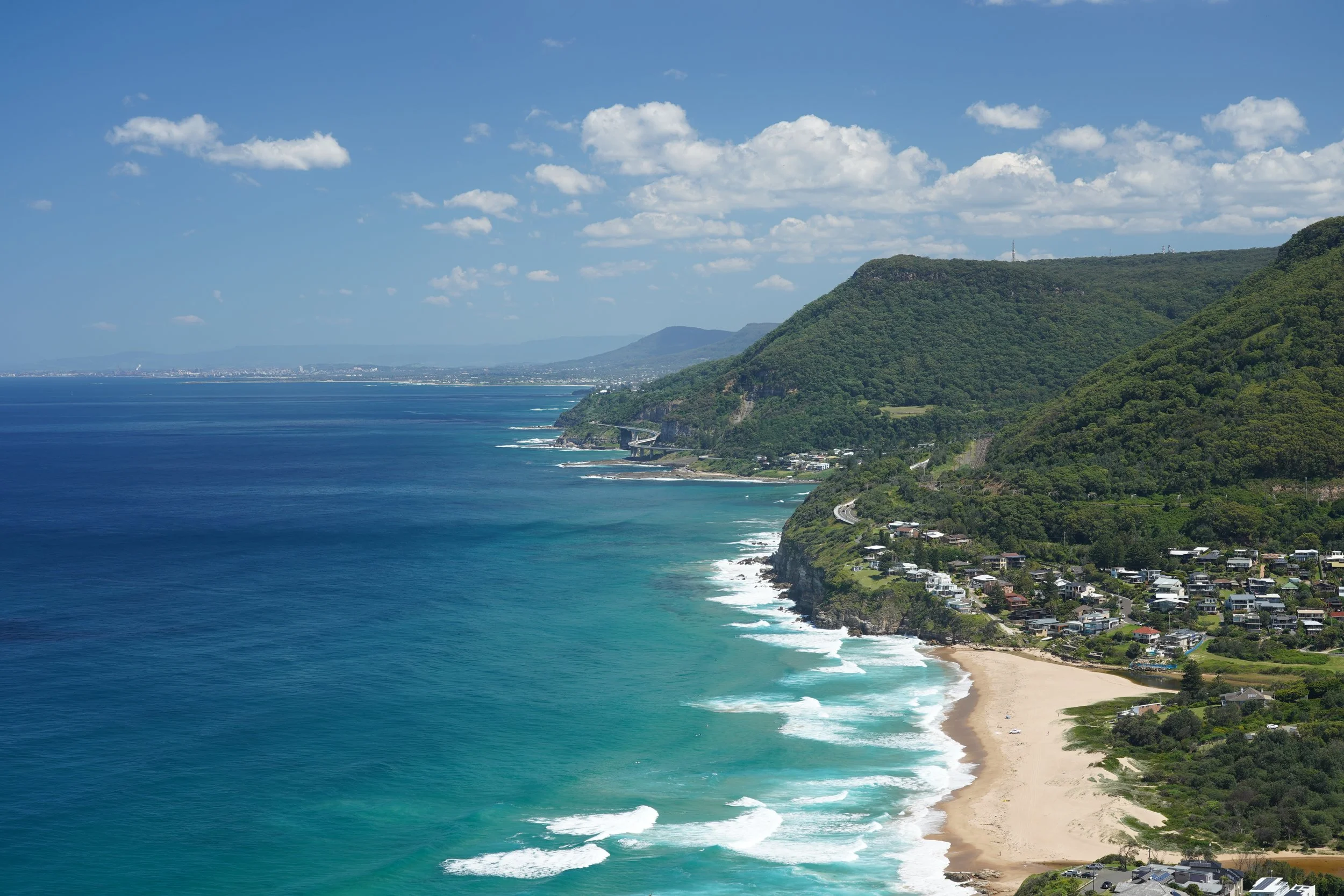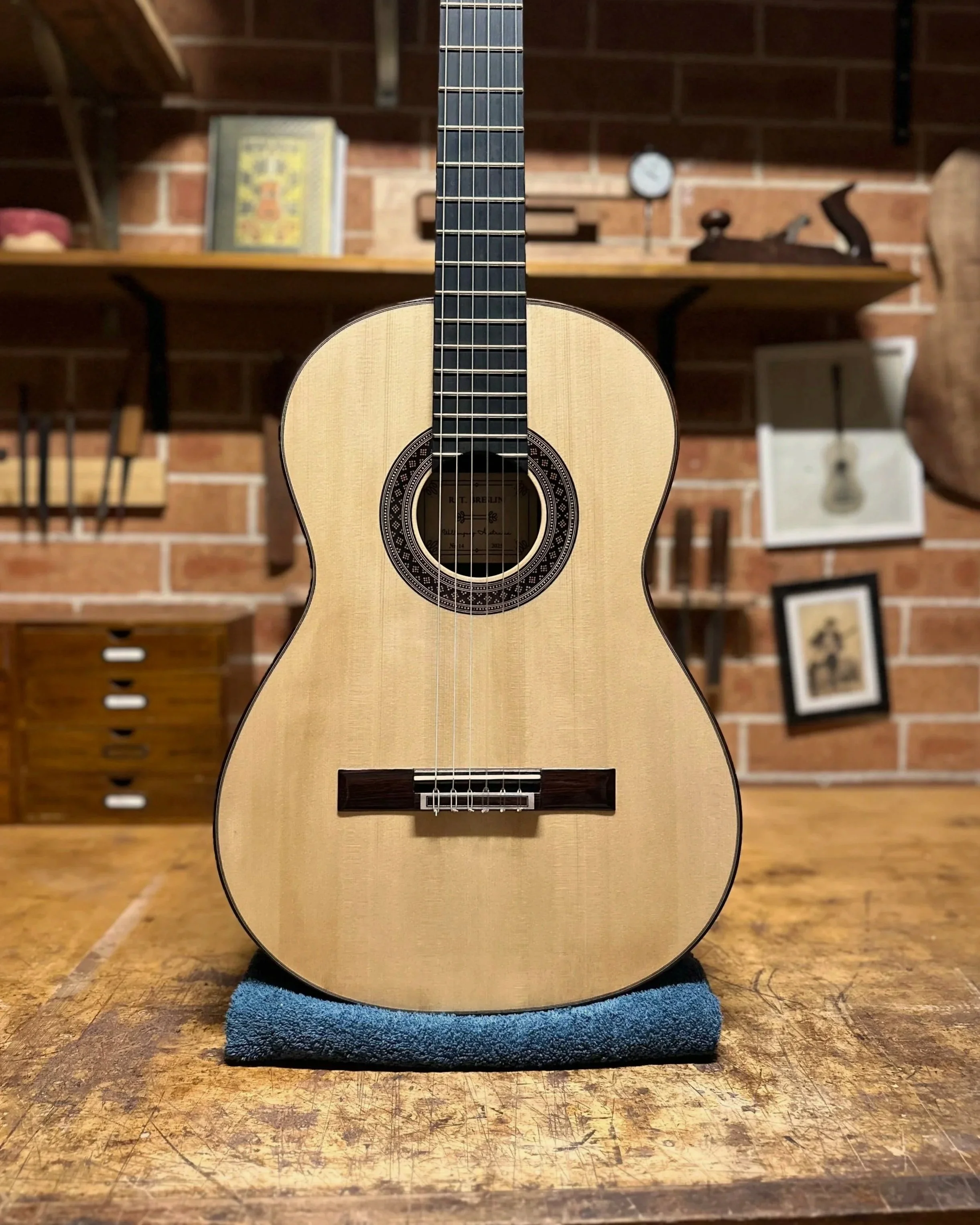
In Wollongong, my converted one-and-a-half-car garage serves as my workshop. It houses my chisels, planes, knives, bandsaw, timber, and workbench — and is the reason my wife has to park on the street.
In my workshop I dedicate my time to building classical guitars in keeping with the Spanish tradition — constructed on a solera, assembled with hot hide glue, and finished with French polish. I utilise traditional timbers, including European spruce, rosewood, ebony, and maple, while also incorporating Australian native timbers such as Australian red cedar and Queensland maple.
During each stage of the process, I work purposefully towards achieving what I hear as the “Spanish sound”. My approach is inspired by the Granada tradition, favouring European spruce, a delicately graduated soundboard, and a finely voiced fan bracing design that encourages less restricted, more natural movement of the plates.
From the outset of each build, my purpose is to create an instrument that is light in construction and voiced for an intimate response, rich overtones, increased resonance, and a singing, lyrical tone—qualities that stand in contrast to heavier construction methods which often prioritise raw power.
I’m early in my career as a guitar builder and currently dedicate one day each week, along with evenings and weekends to spend in the workshop. Every process and component is completed by hand and each instrument is finished with a French polish, a months-long process of applying thousands of micro-thin layers of shellac with a cotton pad. Each guitar is the result of a slow and deliberate process, and as a result my output is typically at three guitars each year, reflecting the time, care and intention behind each instruments making.

Wollongong landscape photography courtesy of Billy Fogden



